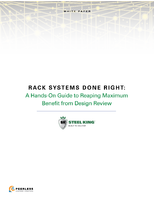Hull Roughness Gage

Controlling the roughness of a ship's hull plays an important role in the operating costs of a vessel.
The roughness of a ship's hull increases mainly due to corrosion, pitting, plate undulation, mechanical damage, dry spray and above all bio fouling. Proper maintenance and the correct application of high-end anti-fouling coatings reduce the hull roughness which will lead to significant savings on fuel consumption and CO2 emissions. The hull roughness is measured during in-docking and out-docking. The Hull Roughness Gauge measures the AHR value (Average Hull Roughness) of sea going vessels. AHR is the 'mean' of all the vessel's hull roughness readings and is the measure against which ship's performance is correlated.
The TQC Hull roughness Gauge consists of a Control unit with a menu-driven interface and a Sensor unit.
The Hull Roughness Control unit can be operated with just one hand, a 4-way directional push button operates an intuitive menu on a large illuminated display. The neck strap keeps the users' hands free when required. The Sensor unit is equipped with three non-slip wheels and a carbide tipped stylus and is moved over the ship's
hull in a horizontal way collecting series of measurements. A set of LED's indicate the status of the instrument so operation is possible without observing the control unit.
Statistics, time/date and location of each series and the average hull roughness are automatically calculated and stored in the Control unit. Using the supplied USB-cable and software you instantly create inspection reports in Microsoft Excel. Your own company logo and / or details can be incorporated to restyle your reports.
CONTACT:
Sherri B Thompson, Ad Manager
(954) 946-9454




